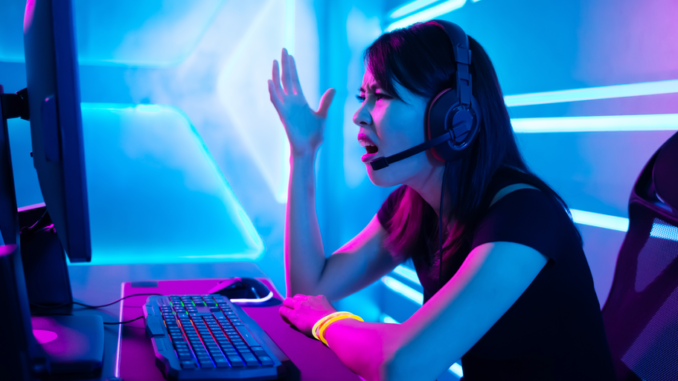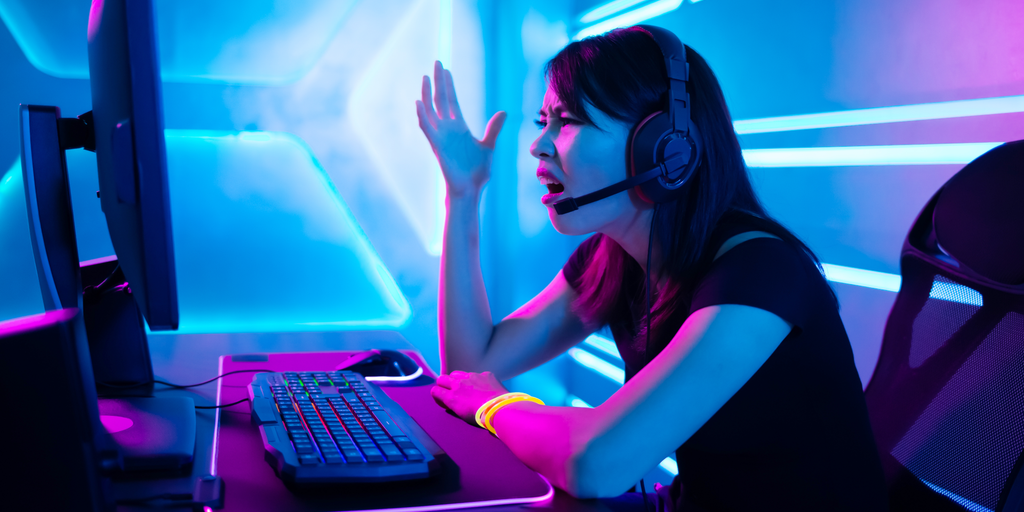
[ad_1]

Did you just unbox a Butterfly Knife in Counter-Strike 2? You’d probably love to bring that over to Call of Duty: Warzone—but you can’t. Are NFTs the answer? Getting game creators to embrace a decentralized ecosystem of interoperable items might be part of the path forward, but it’s not a silver bullet solution.
There is a divide on what the future of gaming will look like. One camp believes that interoperability is the next revolution in gaming, with NFTs serving as the vehicle to enable unique item ownership and functionality across games and apps. But many in the other camp believe that it is simply not possible.
Interoperability in gaming allows for assets to be transferred from one game to the next. This promotes the concept of true ownership of digital assets, preventing users from spending thousands of dollars in a game just for them to be wiped out when the next thing releases.
Crypto advocates point to NFTs as the solution, as they can represent a unique item or asset and be plugged into various games and decentralized apps (dapps) with a wallet. But owning a tokenized item that you can cart around into virtual worlds and games doesn’t address the issues around actually making that whole process work.
“When you think of interoperability, you imagine: I could take a gun out of Fortnite and it’ll work in Call of Duty. Of course, that’s never gonna work, right?” Tobias Batton, founder and CEO of Ex Populus, told Decrypt’s GG. “The balance would be off. How damage works in Fortnite works differently in Call of Duty.”
For now, Batton is right. Interoperability has yet to hit mainstream gaming, and it may take a long time to do so. Meanwhile, developers in Web3 are attempting to lay the groundwork for this new era of gaming—but we’ve yet to see particularly prominent or effective results.
According to Crucible Network founder Ryan Gill, who’s working to enable developers to build interoperable games, there are two major roadblocks: tech and business.
It starts with standards
In order for assets to be easily interoperable, tech standards need to be put in place and widely adopted by the industry. While NFTs can help facilitate the use of user-owned items across games, there’s much more to be done than supporting blockchain assets. A universal coding language could help, but this isn’t the primary concern for Gill.
“It is standardization. It is agreeing around certain file types and how those file types are built into schemas or into architecture,” Gill told Decrypt. “Right now, in the game development world, FBX is sort of the standard [for avatars]. Most of these avatars running around Fortnite and Unreal Engine or anything like this, it’s a FBX file type.”
Multiple games using the same file types means it would be easier for assets to be transferred and fully functional across games and platforms. Some companies create standards, but never release them to the public. FBX, by contrast, is a file type available to the public and developed by Autodesk. But that doesn’t mean FBX is ready to fill that role.
“There is no standard skeleton,” Gill said of the main hitch around FBX assets being interoperable between games. “It would be very difficult to achieve full interoperability in the sense that everybody can be trading back and forth, through all these different worlds, with this one thing—because there’s no standard way of the body being designed.”
One way to address this issue is attempting to reach industry-wide cooperation, moving towards standardized open-source file types that enable the future of interoperable gaming.
The Metaverse Standards Forum is a nonprofit organization dedicated to “fostering interoperability for an open and inclusive metaverse.” Launched in June 2022, 37 founding organizations came together to strive for metaverse standardization. These founding firms include Meta, Adobe, and Microsoft—and thousands more have joined since.
“The Forum organizes its activities around technology domains where its members see the strongest need and opportunity for interoperability.” Neil Trevett, Metaverse Standards Forum president, told Decrypt.
The Metaverse Standards Forum has created open dialogue among the standards development community and the wider industry. They recently launched the pilot of the Metaverse Standards Register, which aims to serve as a public database of the standardization ecosystem.
The organization is broken down into nine “active domain groups” and a number of exploratory groups, each focused on different elements of interoperability. One of the most notable groups is the “3D Asset Interoperability Domain Group” which is working to improve interoperability between the USD and glTF file types—two common 3D asset standards—among other things.
“There is always a dynamic tension between proprietary technologies, often controlled by larger companies, and open interoperability standards.” Trevett said, “[but] the fact that the Forum has gathered over 2,500 member organizations is testament to the intense industry interest in interoperability’s ability to build commercial opportunities for companies of all sizes.”
Additional ties with tech giants like Nvidia, Nokia, and Huawei are helping the organization attempt to unite the industry. Getting the titans to play ball and agree on standards is critical, but there’s also plenty of work being done by upstarts who are building from the ground up.
Builders are building
As with all revolutionary changes, the incumbents aren’t often the ones who lead the way. For now, it’s smaller games and Web3 startups that are experimenting most publicly in an effort to embrace and expand the premise of interoperability.
Ready Player Me provides an “end-to-end character system” for developers using the glTF standard. This allows users to bring their avatar across titles that use the startup’s infrastructure. While AAA games don’t need to rely on tools like this, smaller studios have apparently taken to the idea, with the firm claiming that over 10,000 developers are using it.
“It’s very easy for us to make avatars travel across games that use our avatars, because they’re all built on the same standards,” CEO of Ready Player Me, Timmu Tõke, told Decrypt.
Crucible Network’s Emergence SDK also equips developers with the tools they need for interoperability, although it doesn’t aid directly in avatar creation. However, the system is focused on a different standard: VRM, a Japanese standard that is built on top of glTF.
While these organizations and others are trying to provide interoperable standards for developers, the possibility remains that the game industry will never have true, widespread interoperability—but instead a siloed version of it. Tõke sees potential for a mix of gaming networks, but says the goal should be to avoid continuing the trend of closed ecosystems.
“It’s important that the network has the right values, because it was our mission is to break down walls to build a more connected virtual world,” Tõke said. “And it’d be pretty ridiculous if we just built a wall around that.”
Mainstream adoption ahead?
While smaller developers adopting interoperability is a great start, the end goal for many is AAA games coming onboard and driving the concept to the masses. The Web3 ideal of interoperable games and applications won’t make a very meaningful impact if most of the major players stick to their own walled gardens.
“There just needs to be one or a few big experiences that fully adopt interoperability and have some scale,” Tõke told Decrypt.
For example, Fortnite saw record-breaking success after introducing its battle pass in Season 2. This way of monetizing a free-to-play game wasn’t new, but Fortnite was the most successful example of it in the mainstream. It was such a success, in fact, that the battle pass system has since been implemented into other huge games like Call of Duty and League of Legends.
There’s another lesson to take from Fortnite: money talks. Game publishers may cling to their current closed models for as long as they continue to rake in cash. Industry giants need to be convinced that opening up will ultimately benefit the bottom line before they’re willing to shift away from what already works.
“Interoperability needs to have a no-brainer business value,” Tõke explained. “Our hypothesis is that if you sell items in your game that work in other games, then you can sell more items.”
While this is still just a hypothesis, Tõke believes there are early signs that this could be true. However, he admits that there needs to be more data at scale before big companies start taking note. For this reason, it’s possible that we’ll begin to see interoperability happen at the top level across the games of the same developer and/or publisher.
“I think the first forays will be games from the same studio. It just makes it a lot easier to pick which NFTs will be interoperable,” Daniel Paez, Immutable’s executive producer on NFT card game Gods Unchained, told Decrypt.
Paez added that he sees studios tapping into interoperability to combine communities, rather than starting from scratch with every new title.
“Why can’t we just treat it as one community with different subcategories?” he asked. “I think that’s where we’re going to see the first forays actually creating interoperability: tapping into your whole community, as an organization versus segments of it.”
In this sense, interoperability doesn’t have to be as plain as bringing a skin from one game to another. Instead, burning—or effectively destroying—an NFT from game A could result in being given a reward in game B.
For the time being, interoperability is still largely an experimental concept being driven by the Web3 gaming scene—a niche space that many gamers aren’t keen on exploring. Organizations are working to create industry-wide standards to propel that idea into the mainstream, with or without NFTs in the mix, but substantial hurdles remain.
Prominent game studios are surely watching with a keen eye, however—waiting to see if interoperability is a model that gamers like and can make them money, and perhaps also whether NFTs are the best way to enable that functionality at scale. Until then, we’ll all have to be happy with our Fortnite skins only being available in one place.
Additional reporting by Andrew Hayward.
Stay on top of crypto news, get daily updates in your inbox.
[ad_2]
Source link




